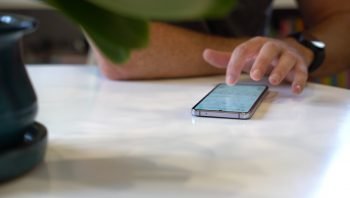
How Android Users Can Minimize Blue Light’s Effects on Eye Health
As smartphones become increasingly essential for school, work, and daily life, individuals utilize mobile operating systems like Android for more efficient research, communication, and overall connectivity.
In fact, a report reveals that Android continues to dominate the global smartphone industry with a market share of 71.65%. With top smartphone brands like Samsung, Huawei, and Google Pixel using Android as their main OS, Android users can expect continuously evolving features and capabilities for their mobile devices.
While smartphones undeniably contribute to daily productivity and efficiency, Android users must be aware of the health risks of increased screen time. Digital devices emit artificial blue light, a short-wavelength type of light that not only interferes with the circadian rhythm but can also harm the eye’s retina and other internal structures. A review published in Heliyon notes that blue light from digital screens can be associated with eye symptoms like visual fatigue, dry eyes, and physical discomfort, especially when devices are used for prolonged periods at close range.
Fortunately, you can follow these digital protection tips to minimize blue light’s damaging effects when using Android devices and ultimately preserve your long-term vision.
Wear blue light-filtering glasses
Since harmful blue light can also be emitted by the sun, it’s best to use protective eyewear that can minimize your exposure both during smartphone use and outdoor activities. In this case, Eyebuydirect offers blue light glasses with lenses that can filter blue-violet light between 400-455 nanometers while still allowing essential light to pass through.
The retailer’s blue light-filtering lens options can also be tailored to your needs and preferences, from EBDBlue360 with a premium coating that reduces screen glare to EBDBlue Smart with light-adjusting technology. These lenses can then be added to prescription or non-prescription frame styles, such as the metallic St Michel frames and lightweight Romy frames.
Optimize display settings
In addition to wearing glasses that can filter blue light, you can reduce blue light emissions from your phone’s screen by utilizing the built-in display settings of Android devices. For example, Samsung rolled out a feature called Eye Comfort Shield to adjust the blue light emitted by your phone as the day progresses.
Not only does this feature help you sleep better at night since it stops blue light from blocking melatonin, but it also preserves visual comfort and reduces the risk of digital eye strain. The dark mode feature also alters your phone screen’s interface to reduce brightness and, by extension, blue light emission.
Set screen time limits
Lastly, Android devices now enable you to limit your screen time for healthier smartphone use. This feature is called Digital Wellbeing and is available across all Android devices, whether you’re using a Samsung Galaxy or Google Pixel.
You can set time limits for specific apps, with the timer letting you pick anything from five minutes to 23 hours and 55 minutes. You can also utilize this feature to track your overall phone usage and cultivate better screen time habits. With willpower and discipline, you can avoid spending too many hours in front of the screen and give your eyes a break from constant blue light exposure.
In summary, blue light from digital devices like Android phones can affect eye health through symptoms like eye strain, fatigue, and dryness. However, you can wear blue light glasses, optimize display settings, and limit your screen time to keep your eyes safe and protected from harmful and excessive blue light.